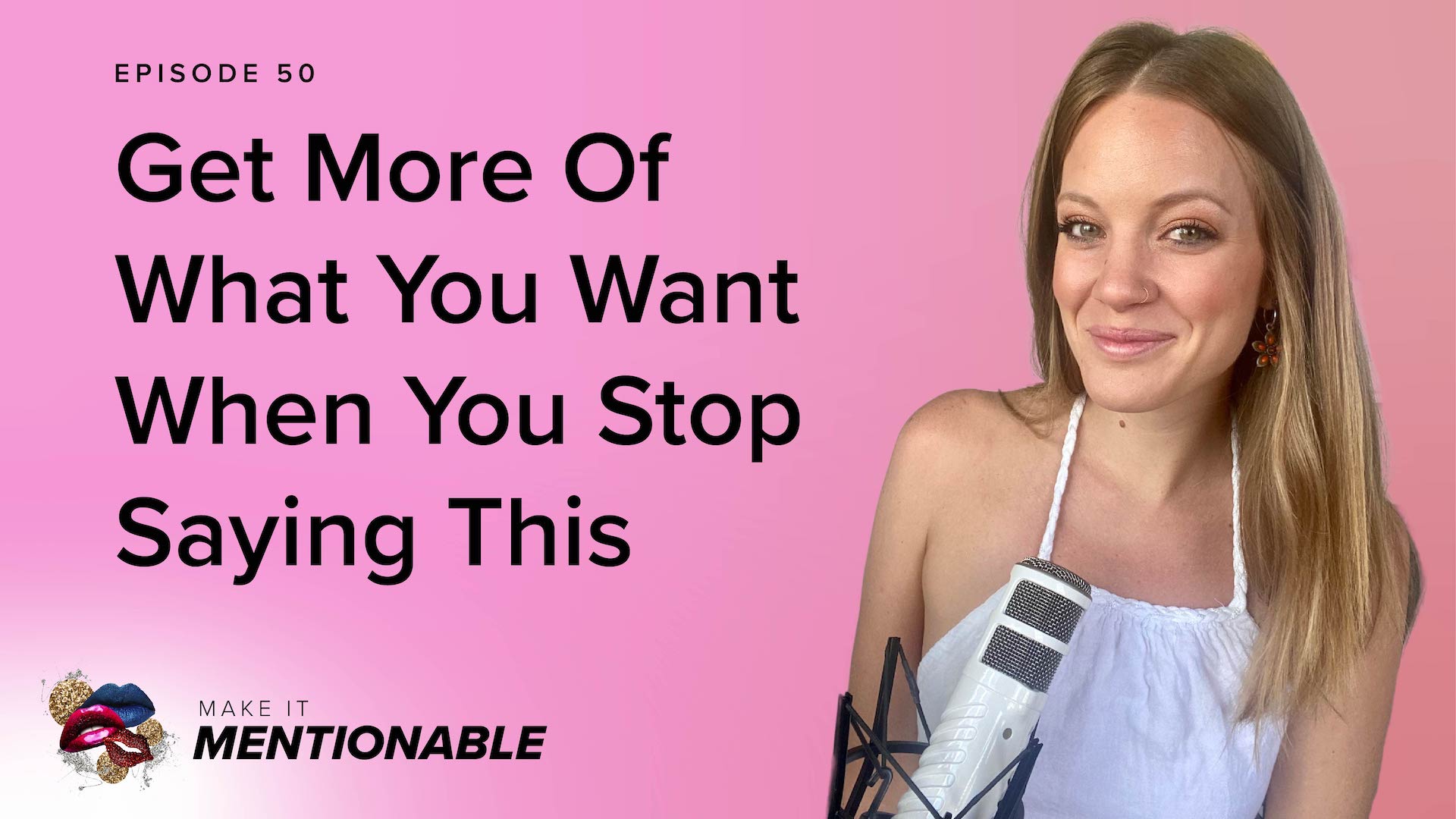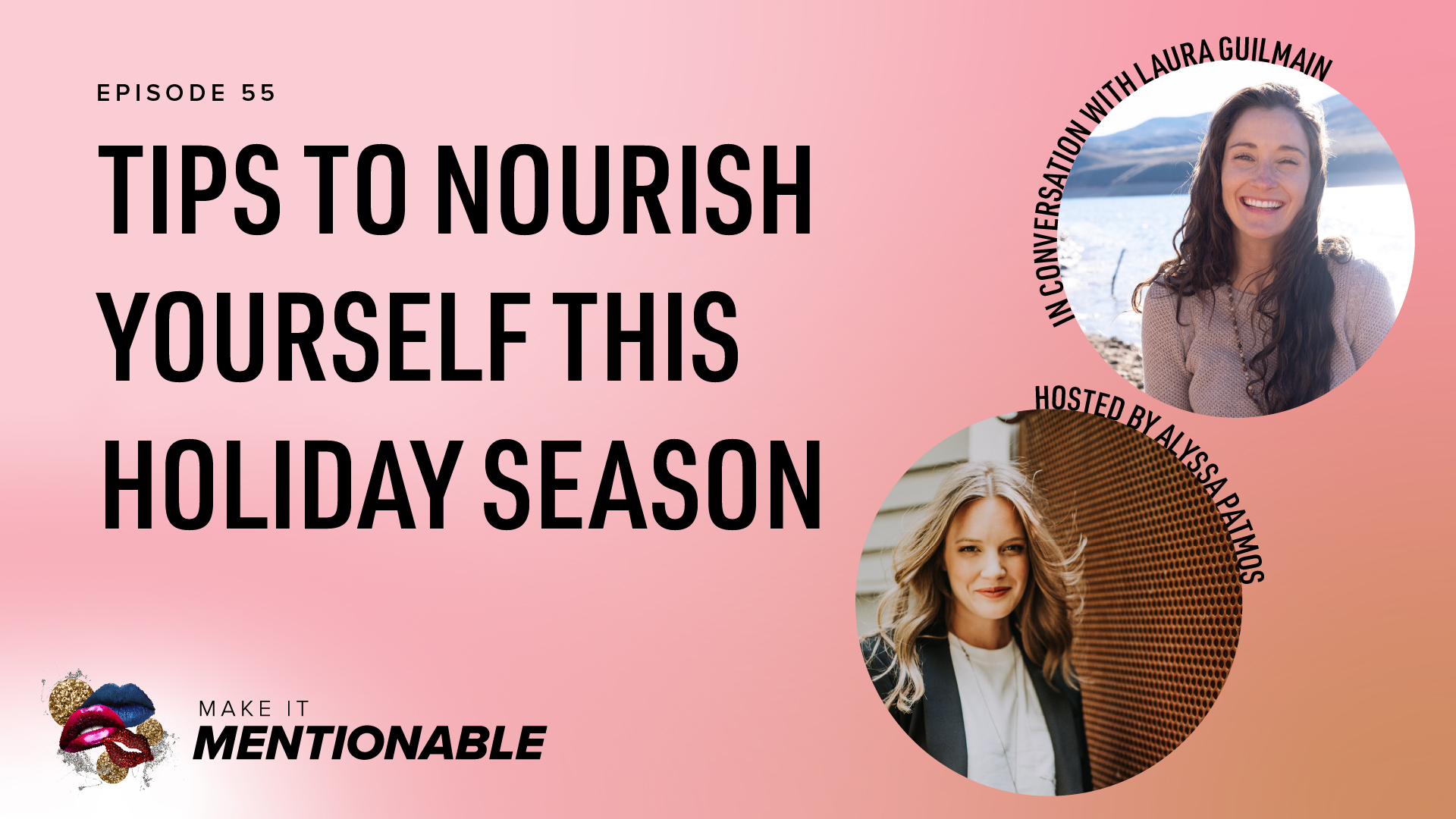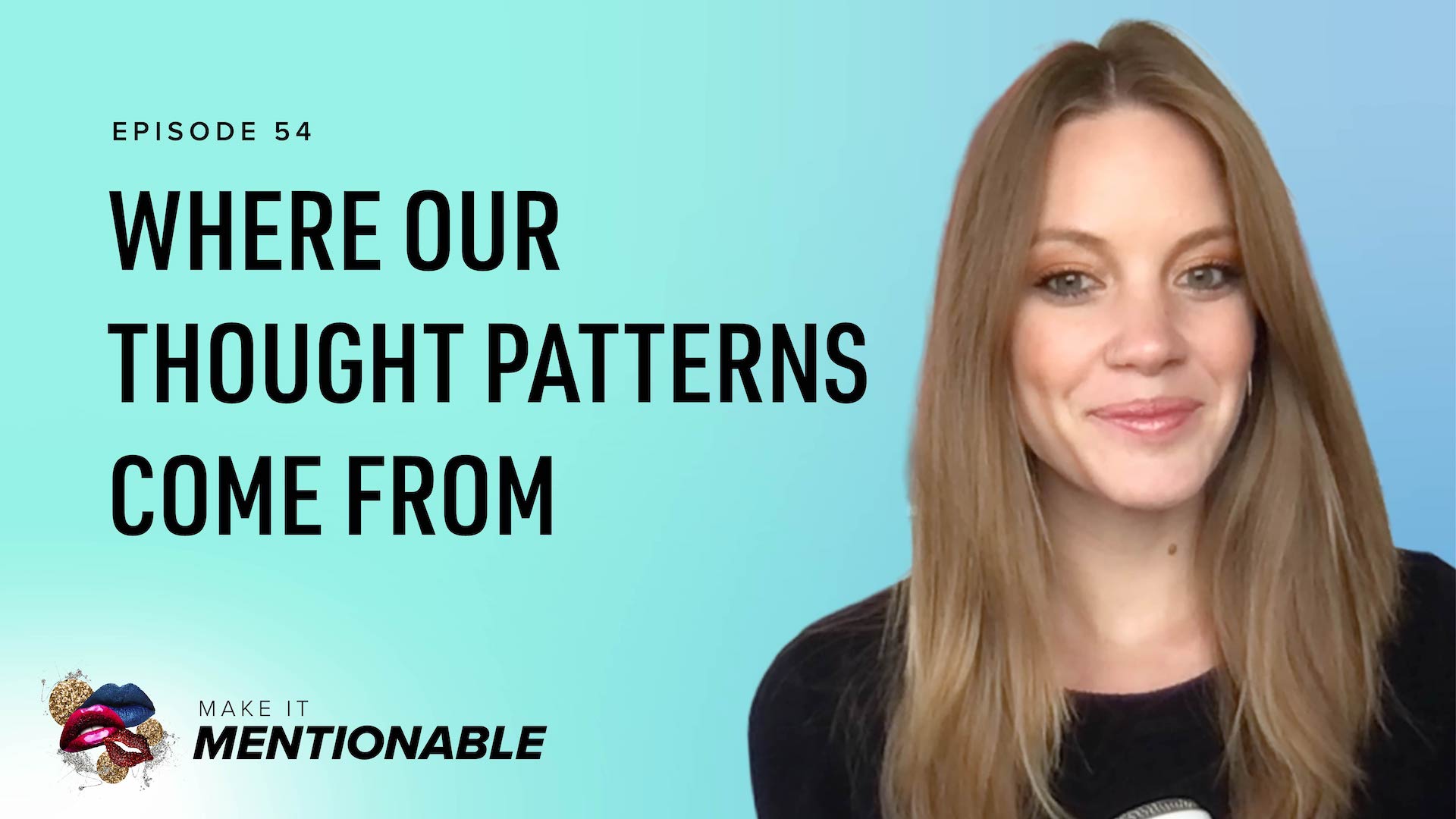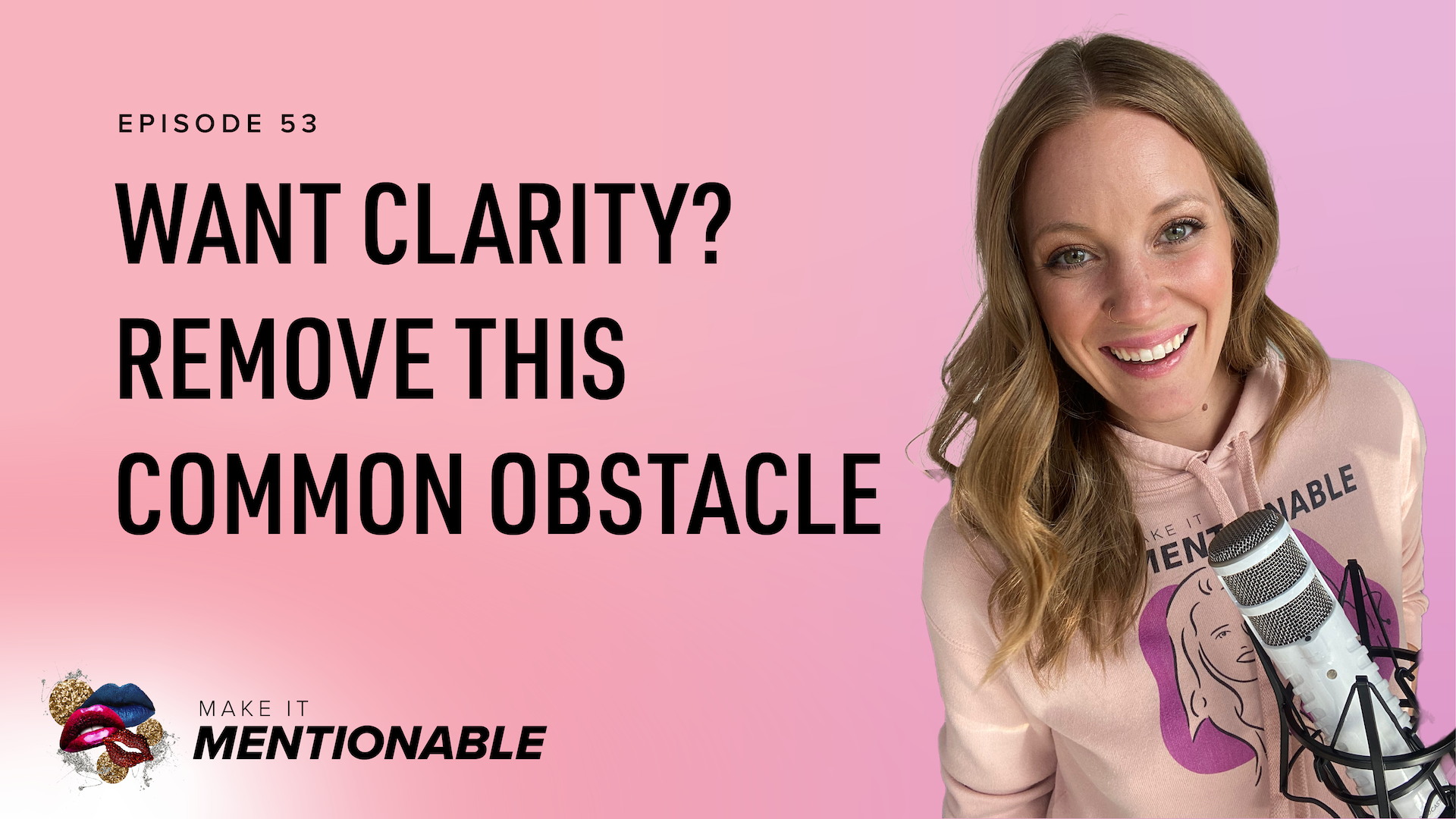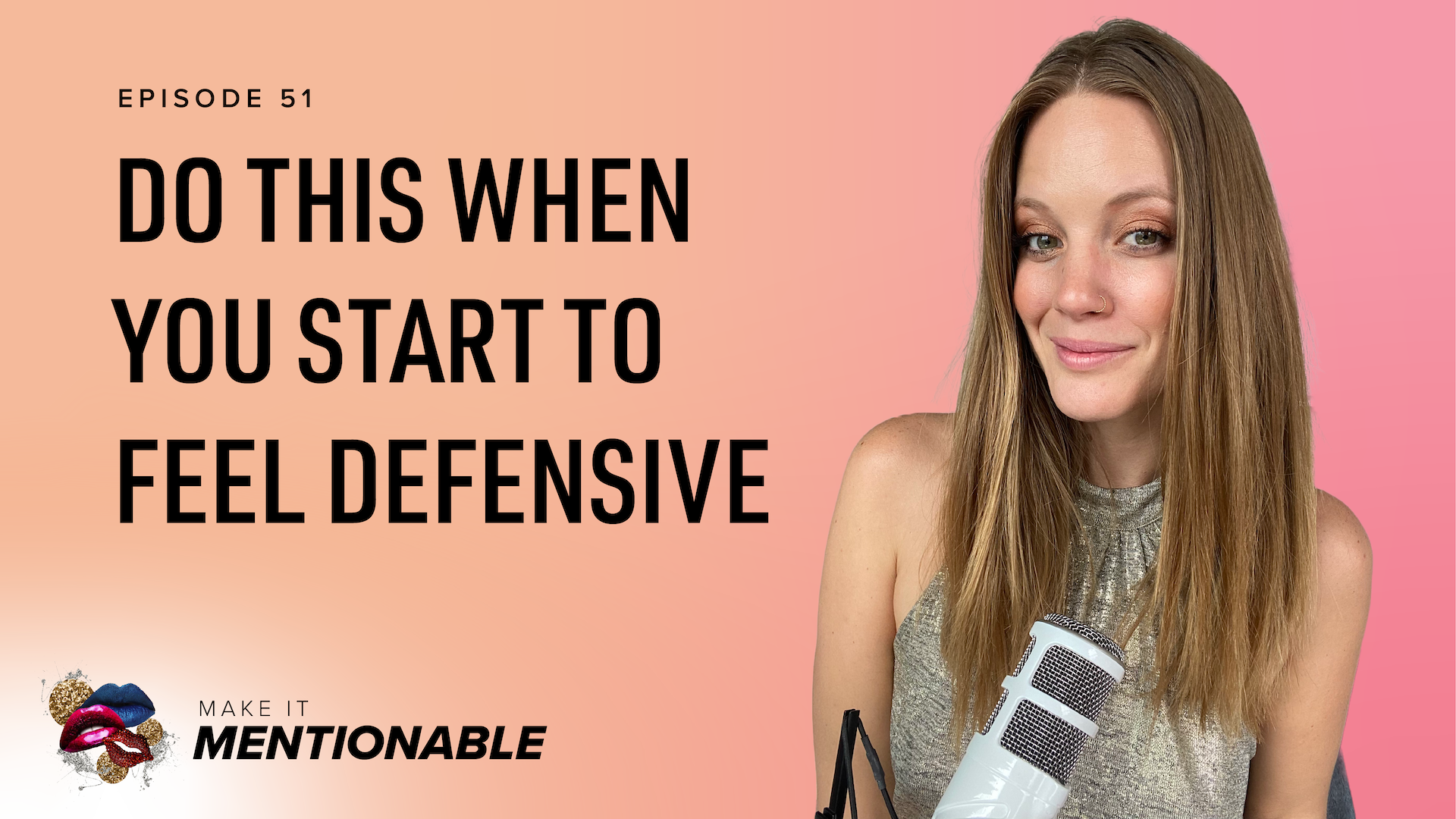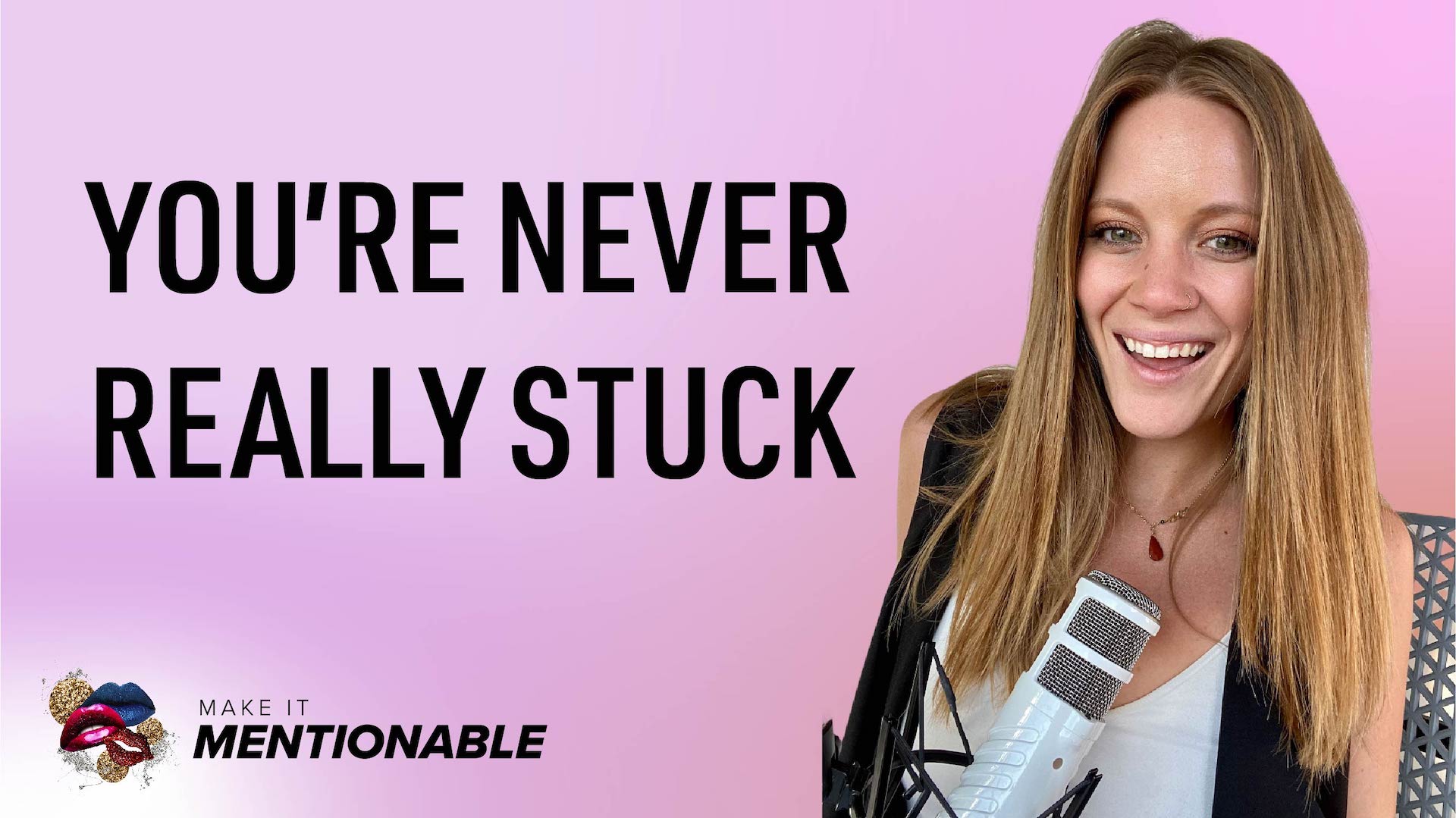Alyssa Patmos 0:04
This is Make It Mentionable. I’m Alyssa Patmos and this is the show about being human in a world that encourages us to be robots.
I invite you to join me as we journey through the mess, the magic and the mania in between. Because what we can talk about, we can manage.
This honest conversation extravaganza includes free flowing conversations and high doses of vulnerability to remind you that you aren’t alone.
No topic is off limits, and episodes are designed to leave you smarter, aka more self aware than when you came.
I am so glad you’re here.
This Week’s Language Pivot: “Can You…?” Versus “Are You Willing To…?”
Alyssa Patmos 0:50
Hello, Hello. And welcome back to another episode of Make It Mentionable. I’m your host, Alyssa. And this is episode number 50. I cannot believe we’re here.
But I am so excited. And if you have been on this journey with me since the beginning, thank you so so much. And if you are brand new, welcome, welcome.
This week, we are talking about a language pivot.
And I bring these up a lot because they’re so powerful communication, the words we use the story we tell others, it’s how we understand the world around us.
And even though most of us have taken a language arts class, in middle school and high school, they didn’t actually teach us the art of language, they didn’t teach us to pay attention to the nuances of what we’re saying and how it brings about results in our world.
Pivoting To A More Effective Phrase
So there is a very simple pivot from a phrase that seemingly creeps into our vocabulary quite often to something new, that makes getting what we want easier.
So the phrase that we want to pivot away from is “Can you [insert favor to ask]?”
“Can you, can you do this for me?”
“Can I have the hamburger?”
When I was little, I feel like my parents taught me not to say, “Can I have” when I’m ordering a meal. And they instead had me say, “May I have?”
But even that is not the pivot that I’m talking about here today. So you know, we can get caught saying, “Hey, can you can go and walk with me later?” Or, “Can you do the dishes before I get home?”
And it’s very… can: is such a natural word. We use it often in, in language in our day to day conversations, but it’s not always the most effective word.
And so pivoting away from “Can you…” to another phrase I’ll give you in a second can really help shake up getting what you want.
Because in reality, let’s think about it. We say, “Can you walk with me later?” Or, “Can you do the dishes before I get home? Sure, the other person is they can?
Yeah, they can.
But we’re missing other factors in that request. We’re missing, “Do they want to? Are they willing to?”
And because of that the other person then is having to decipher and filter through all of those questions to be able to answer this one request that you’re making.
Why Is This Pivot So Powerful?
And so a powerful pivot is pivoting away from, “Can you…” to, “Are you willing to…?” is so so so powerful, because it is a direct ask.
Other people aren’t having to mind read, they’re not having to guess what’s being asked of them.
And it’s clearly communicating what you want.
And generally speaking, people want to help other people, you know, especially if it’s someone you’re in a relationship with, like usually in a relationship, each person is invested to some degree and helping the other person get needs met.
It becomes more challenging when that need isn’t articulated clearly.
And so pivoting from “Can you…” to, “Are you willing to…?” is a powerful way to ask for what you want.
And when we ask for what we want. Clearly.
It’s impressive how much more we get what we want. And this came up.
The Way This Showed Up For Geoff + I This Week
This came up earlier this week, Geoff and I happened to say like, “Hey, can you make lunch?”
Which clearly what I’m saying behind there is is or perhaps not so clearly, which is the problem with “Can I…” is “Hey, I am really slammed right now. Are you willing to make lunch?”
Do you hear the difference in those two things?
Like, “Can you make lunch?”
He has to sit there and think like, “Yeah, I can, but I’m also slammed. Like, why do you want me to? Like, is it necessary?”
And, and it’s all of these other questions. things that come up that that lead to pressure building.
And, and instead, I could have said, “Hey, I’m really slammed right now. Are you willing to make lunch?”
And in that instance it’s like, “Oh, sure if you need me to, yeah, absolutely.”
Or like, “Okay, yeah, I have I have a meeting in 15 minutes. Are you okay if it’s after that?”
And then negotiation can take place, and then you can get to an agreement and something can transpire without feeling all this pressure and guilt to have to say yes, because you feel like they’re asking you for something, but they’re not completely asking directly.
Saying No + How This Language Pivot Strengthens Boundaries
So a super powerful pivot is pivoting from “Can you…” to, “Are you willing to…?”
“Can you…” sort of takes away someone’s autonomy to say, yes, fully and to be fully on board with the request.
And when they’re being asked, “Are you willing to…” it’s much more direct, without being you know, completely, like telling them what to do.
Because that doesn’t work well, either.
If you just say, “Hey, make lunch for us,” like, no. That isn’t where we want to give people choice.
And in that choice, we truly want to give them choice, we want to give them the opportunity to say no, or to understand what they’re truly being asked.
Transforming Relationships (Without Forcing The Other Person To Change)
And when we make pivots like this, it’s really, really amazing how a relationship can transform without ever needing the other person to change.
And that is what I love talking about all the time is how many ways we have power to influence situations and relationships that we’re in without needing the other person to do a damn thing differently.
And it comes down to language pivots like this a lot of times like, are we actually communicating what we think we’re communicating?
So a powerful pivot for you this week is pivoting from “Can you…” to, “Are you willing to…?”
If you want to continue the conversation, head on over to AlyssaPatmos/Show. This is episode 50.
And for more in between episodes, sign up for The Peel, my weekly newsletter with fresh perspectives to help you pivot, you can sign up at AlyssaPatmos.com/ThePeel.
Thanks so much for tuning in. I’ll catch you next week.
Alyssa Patmos 7:24
You’ve just finished listening to another episode of Make It Mentionable with me your host Alyssa Patmos. If you’re looking for more in between episodes, then sign up for the peel. It’s my free newsletter that gives tips for how to navigate whatever life dishes and it’s also the place where I share the juiciest of stories. To check it out. Head on over to AlyssaPatmos.com/ThePeel. Thank you so much for tuning in. And I’ll see you next time.
Transcribed by https://otter.ai

